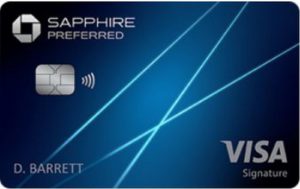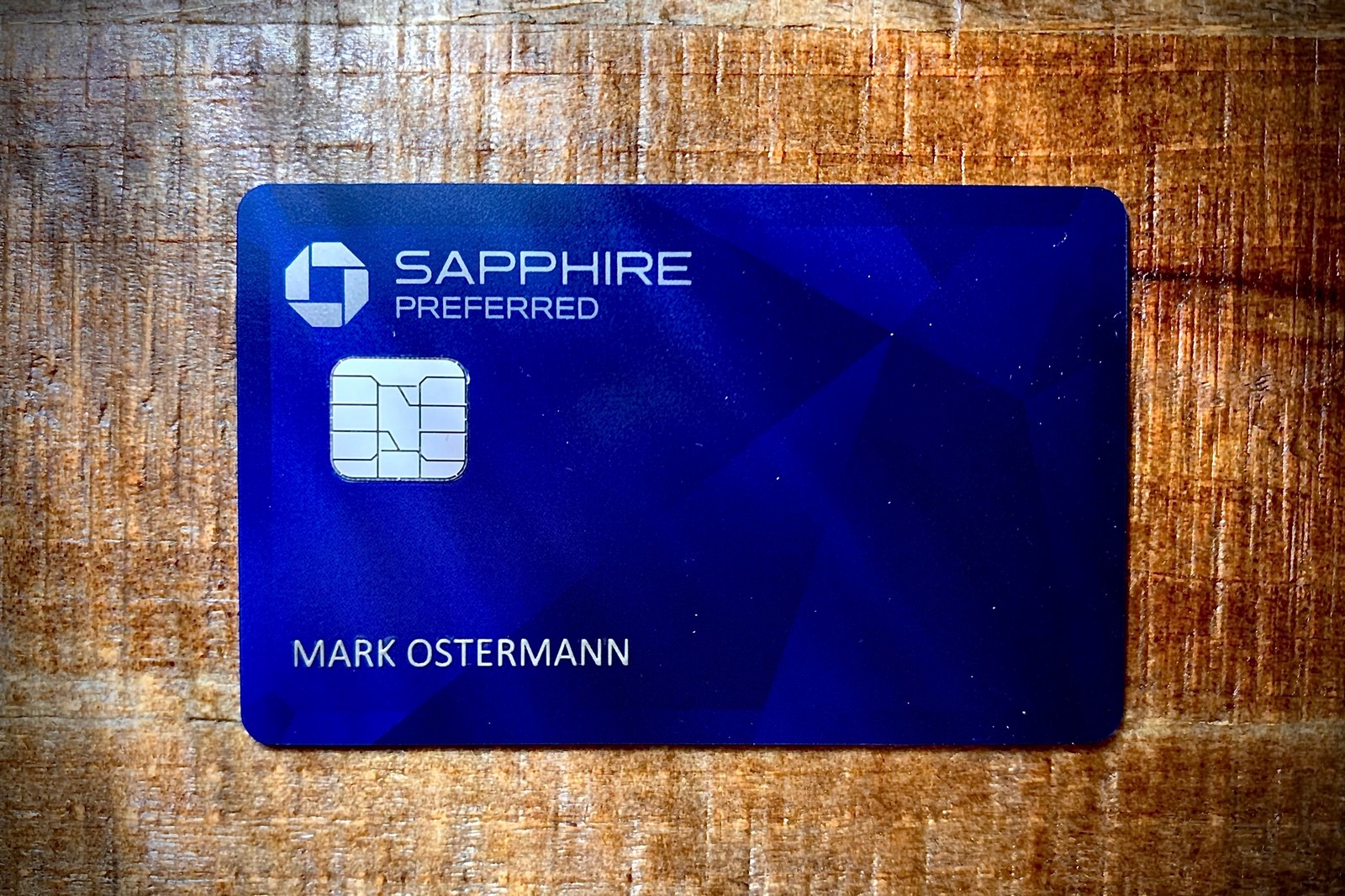Chase Sapphire Preferred Credit Card Review
The Chase Sapphire Preferred is probably the most popular travel credit card on the market. In this Chase Sapphire Preferred credit card review we’ll look at the card’s decent earning structure, its nice welcome offer and why Ultimate Rewards are among the most versatile points currencies available.

Chase Sapphire Preferred – Welcome Offer
The current welcome offer on the Chase Sapphire Preferred is:
- bonus_miles_full
- Learn More
Our Take: This welcome offer has a baseline cash value, however you can get a lot more value for your points by transferring them to travel partners such as Hyatt & United. This is one of the best personal card offers out there overall.
It may even be possible to get an offer with a waived annual fee in branch. The offer is only available at certain branches though.
Chase Sapphire Preferred – Welcome Offer Restrictions
Unfortunately Chase has a few restrictions you should know about before applying for the Sapphire Preferred. Mainly there are two sets of restrictions in place for the Sapphire Preferred Bonus.
One Per Family Rule
Chase has a one per family rule in order to limit bonuses across Sapphire products. The “One Per Family Rule” works as follows:
- This product is available to you if you do not currently have any Sapphire card.
- This product is available to you if you have not received a new cardmember bonus for any Sapphire card in the past 48 months.
5/24 Rule
Additionally, Chase has the 5/24 rule on all of its credit cards. In general you won’t be approved if you have opened up 5 or more revolving accounts in the past 24 months from all lenders, not just Chase.
Chase Sapphire Preferred – Bonus Categories
The Chase Sapphire Preferred comes with the following earning structure:
- 5X on Chase Travel purchases
- 3X on dining, select streaming and online grocery (excludes Target, Walmart & wholesale clubs)
- 2X points on travel
- 1X point per dollar spent on all other purchases.
- Get a 10% back in points anniversary bonus as well. This happens after you renew and pay an annual fee. It is based off of the money spent on the card. So if you spent $25,000 in a year you would get 2,500 points.
- Learn More
Points or Cashback?
This card earns Ultimate Rewards points which can be transferred to travel partners, used to book travel through the Ultimate Rewards portal or cashed in at $.01 each. Generally it is not a good value to cash in your Ultimate Rewards points. We use our points most often for Hyatt and some of Chase’s other partners. You can also cash out the points via Pay Yourself Back at 1 cent per point with the Sapphire Preferred.
Pro Tip:
If you have any of the following cards along with Chase Sapphire Preferred, you can combine your points together. Even though these cards come with no annual fee, the Sapphire Preferred unlocks them and makes them fully transferrable points.
- Ink Business Cash – 5X bonus categories. Our top pick! – Made for your business
- Chase Freedom Flex – Rotating 5X categories
- Chase Sapphire Reserve – Premium features & travel credit
- Ink Business Preferred – 3X bonus categories – Made for your business
- Ink Business Unlimited – 1.5X everywhere – Made for your business
- Chase Freedom Unlimited – 1.5X everywhere

Chase Sapphire Preferred – Cardmember Perks
The Chase Sapphire Preferred sits in the middle of the pack when it comes to annual fees. It does have one, but it is far less than the $450+ annual fees of premium travel cards like Chase Sapphire Reserve and Amex Platinum. Even though the fee is a bit lower, it still packs a punch when it comes to features.
The Chase Sapphire Preferred comes with the following perks for its $95 annual fee:
- $50 hotel credit every cardmember year (must be booked via Chase travel portal)
- Redeem Chase Ultimate Rewards points in the Chase portal at 1.25 cents a piece
- No foreign transaction fees
- Points transfer 1:1 to many valuable airline and hotel partners including Hyatt, United Airlines, British Airways and Southwest Airlines. See the transfer partners here.
- Learn More
Travel Perks
In addition to the perks mentioned above, as a travel credit card the Chase Sapphire Preferred has a number of valuable travel perks as well.
- Trip cancellation/interruption insurance – If your trip is canceled or cut short by sickness, severe weather and other covered situations, you can be reimbursed up to $10,000 per trip for your pre-paid, non-refundable travel expenses, including passenger fares, tours, and hotels.
- Auto rental collision damage waiver – Decline the rental company’s collision insurance and charge the entire rental cost to your card. Coverage is primary and provides reimbursement up to $75,000 for theft and collision damage for rental cars in the U.S. and abroad.
- Lost luggage reimbursement – If you or an immediate family member check or carry-on luggage that is damaged or lost by the carrier, you’re covered up to $3,000 per passenger.
- Baggage delay insurance – Reimburses you for essential purchases like toiletries and clothing for baggage delays over 6 hours by passenger carrier up to $100 a day for 5 days.
- Trip delay reimbursement – If your common carrier travel is delayed more than 12 hours or requires an overnight stay, you and your family are covered for unreimbursed expenses, such as meals and lodging, up to $500 per ticket.

How Much Is the Chase Sapphire Preferred Welcome Offer Worth?
The Chase Sapphire Preferred‘s welcome offer is pretty simple. On the base level it is worth the cash value of the points – the $95 annual fee. However, you have the potential to unlock more value if you redeem for travel through the Chase portal at 1.25 cents each or transfer to travel partners for a much higher value.
In our opinion transferable Ultimate Rewards points are worth 1.5 cents each when redeemed for travel. For example 75,000 Ultimate Rewards points would be worth about $1125. If your offer amount is more or less you can adjust the math. Make sure to subtract out the annual fee from your calculations!
Is Sapphire Preferred Worth Keeping Long Term?
The Chase Sapphire Preferred‘s $95 annual is very reasonable for what the card brings to the table. The travel insurance and car rental insurance will more than cover that cost for some, if you don’t already have another premium Chase card. Being able to refuse car rental insurance can save you hundreds of dollars over the course of a year if that is something you currently pay for.
One of the best plays for this card is that it gets you the ability to transfer Ultimate Rewards points. You can then combine it with Chase Ink and/or Freedom cards for more flexible earning with the ability to transfer and get the most value out of your points. For many this is a card to get and keep.

Chase Sapphire Preferred Credit Card Review – Bottom Line
The Chase Sapphire Preferred is a solid product with a very valuable welcome offer. This is a strong contender for people who have a lot of spend on travel and dining as well. In our opinion the best part of the Chase Sapphire Preferred is that it earns valuable Ultimate Rewards points and it allows you to transfer those points to Hyatt and other partners.
Additionally, for a much lower fee, the Chase Sapphire Preferred comes with a lot of the same travel perks that the Chase Sapphire Reserve has. The trip delay, rental coverage, baggage delay insurance etc. is all very similar to, or the same, as the more expensive Chase Sapphire Reserve. That is a win for this card!
Conclusion
While the Chase Sapphire Preferred used to be over shadowed by the flashier Chase Sapphire Reserve. That changed a bit with the recent refresh. The Sapphire Preferred currently has a better welcome offer and is a card most people start with when getting into miles/points. In our opinion this card delivers a great welcome offer, decent bonus categories and one of the best points systems around and thus is a winner.
To sum it up, we have all had this card and recommend it as a great way to get started in miles/points if you are eligible. We consider it the best starter card in the hobby, and for good reason.




“ONE per FAMILY” Rule — As you defined it, this seems to only be the case, IF you made the other family member as an AUTHORIZED USER, then this would qualify AS IF that member HAD the Sapphire card. However, if they are not users that received their own cards, it seems to me that they would qualify, and could apply for their own cards. I think it is an important distinction to determine which cards should be shared, and which should not be.
SECONDARY question — If the other family member applies, can they qualify as a REFERRAL from the other family member that has their own private Sapphire card? Seems this would be a huge incentive to keep the accounts separate, per spouse.
The one per family rule is talking about the Sapphire card family not your household. You can be an authorized user and still get your own card and you can refer to other members within the household. You can not had a Sapphire Preferred and then sign up for the Sapphire Reserve (only 1 card in that family when signing up for a new account).
The expression “starter card” is a potential source of unnecessary hard pulls. Someone with no other cards that is applying for a CSP is almost guaranteed to be denied (unless banking with Chase). I expect what you mean is that it’s a good first card for those who already have an established credit-card history and want to get into award travel, but I can absolutely see someone with little understanding of credit not getting that.
You are correct Tami it was intended as a great starter card as an entry into the miles and points realm.
Just a heads up there’s a typo…
“This product is available to you if you have not received a new cardmember bonus for any Sapphire card in the past 24 months.” Should say 48 months.
Despite the lower AF, CSR still beats out the CSP. Yes, it’s $550 vs $95. But, it’s not hard for that AF to be a wash ($300 credit and 1.5 baseline value vs 1.25 will do it for most). I’ve had the CSR for a few years now, and any time I run the numbers on downgrading, I discover I’m still way ahead by keeping the CSR, and that’s without taking into account the larger benefits it offers.
That said… for a newbie? I can see where the CSP would appear to be the way to go.
Trip delay on CSP is 12 hours. 6 hours is for CSR.
Thanks JB – I will update.
Hi , just one correction. the historical high was 70k….not 60k. I got 70 k January 2017.
Was that a public offer or a targeted/mailer offer?